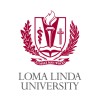Transarterial Chemoembolization Versus Proton Beam Radiotherapy for the Treatment of Hepatocellular Carcinoma
Primary Purpose
Carcinoma, Hepatocellular
Status
Completed
Phase
Not Applicable
Locations
United States
Study Type
Interventional
Intervention
Transarterial Chemoembolization
Proton Beam Radiotherapy
Sponsored by

About this trial
This is an interventional treatment trial for Carcinoma, Hepatocellular focused on measuring Transarterial chemoembolization, Carcinoma, Hepatocellular, Proton Beam Radiotherapy
Eligibility Criteria
Inclusion Criteria:
- Patients are candidates to receive both proton beam and TACE
- Patients with no evidence of metastasis or macrovascular invasion
- Patients with tumor burden that meets San Francisco criteria
Exclusion Criteria:
- Patients who are candidates for surgical resection
- Patients with lesion < 2 cm
- Patients who have contraindication to receive either TACE or proton
- Patients with serum alpha fetoprotein > 500
- Patients with metastasis or macrovascular invasion
- Patients treated previously for HCC by any locoregional treatment
- Patients with prior liver transplant
- Patients with Child class C
- Patients with MELD score of > 25
- Patients with other comorbid diseases that may impact survival
- Patients with ongoing alcohol intake
- Patients with active sepsis
- Patients with gastrointestinal bleeding within a week
- Patients unwilling to sign informed consent form
- Patients with history of noncompliance
Sites / Locations
- Loma Linda University Medical Center
Arms of the Study
Arm 1
Arm 2
Arm Type
Active Comparator
Active Comparator
Arm Label
Transarterial Chemoembolization
Proton Beam Radiotherapy
Arm Description
Transarterial Chemoembolization
Proton Beam Radiotherapy
Outcomes
Primary Outcome Measures
Overall survival
Secondary Outcome Measures
Time to progression
Downstaging
Full Information
NCT ID
NCT00857805
First Posted
March 5, 2009
Last Updated
September 21, 2021
Sponsor
Loma Linda University
1. Study Identification
Unique Protocol Identification Number
NCT00857805
Brief Title
Transarterial Chemoembolization Versus Proton Beam Radiotherapy for the Treatment of Hepatocellular Carcinoma
Official Title
Randomized Controlled Trial of Transarterial Chemoembolization Versus Proton Beam Radiotherapy for the Treatment of Hepatocellular Carcinoma
Study Type
Interventional
2. Study Status
Record Verification Date
September 2021
Overall Recruitment Status
Completed
Study Start Date
January 7, 2009 (Actual)
Primary Completion Date
July 7, 2021 (Actual)
Study Completion Date
July 7, 2021 (Actual)
3. Sponsor/Collaborators
Responsible Party, by Official Title
Sponsor
Name of the Sponsor
Loma Linda University
4. Oversight
Studies a U.S. FDA-regulated Device Product
Yes
Product Manufactured in and Exported from the U.S.
Yes
Data Monitoring Committee
No
5. Study Description
Brief Summary
Patients with liver tumor burden that exceeds Milan criteria are considered to receive one of the following locoregional treatments: transarterial chemoembolization (TACE), radiofrequency ablation (RFA), percutaneous ethanol injection and proton beam radiation (PBR). The goals of these treatments are to control tumor growth, to downstage tumor size to meet Milan criteria, and to improve survival. Patients who exceed the Milan criteria benefit from tumor downstaging as a result of treatment. Patients who meet Milan criteria benefit from tumor control to bridge them to liver transplantation. TACE is considered the most common locoregional treatment that is used to treat hepatocellular carcinoma (HCC). Proton beam radiotherapy has been used in treating HCC in a few centers across the globe. Phase I and II trials showed a satisfactory safety and efficacy results. Loma Linda University Medical Center is one of these pioneering centers that use proton beam as a treatment for HCC. This is the first randomized trial in the medical field that will compare head-to-head the efficacy of TACE versus proton beam in treating HCC patients.
6. Conditions and Keywords
Primary Disease or Condition Being Studied in the Trial, or the Focus of the Study
Carcinoma, Hepatocellular
Keywords
Transarterial chemoembolization, Carcinoma, Hepatocellular, Proton Beam Radiotherapy
7. Study Design
Primary Purpose
Treatment
Study Phase
Not Applicable
Interventional Study Model
Parallel Assignment
Masking
None (Open Label)
Allocation
Randomized
Enrollment
65 (Actual)
8. Arms, Groups, and Interventions
Arm Title
Transarterial Chemoembolization
Arm Type
Active Comparator
Arm Description
Transarterial Chemoembolization
Arm Title
Proton Beam Radiotherapy
Arm Type
Active Comparator
Arm Description
Proton Beam Radiotherapy
Intervention Type
Procedure
Intervention Name(s)
Transarterial Chemoembolization
Other Intervention Name(s)
(TACE)
Intervention Description
Application of carboplatin, doxorubicin in ethiodol into the artery for one or more sessions.
Intervention Type
Radiation
Intervention Name(s)
Proton Beam Radiotherapy
Intervention Description
Fifteen consecutive sessions
Primary Outcome Measure Information:
Title
Overall survival
Time Frame
lifetime
Secondary Outcome Measure Information:
Title
Time to progression
Time Frame
Lifetime
Title
Downstaging
Time Frame
Lifetime
10. Eligibility
Sex
All
Minimum Age & Unit of Time
18 Years
Maximum Age & Unit of Time
80 Years
Accepts Healthy Volunteers
No
Eligibility Criteria
Inclusion Criteria:
Patients are candidates to receive both proton beam and TACE
Patients with no evidence of metastasis or macrovascular invasion
Patients with tumor burden that meets San Francisco criteria
Exclusion Criteria:
Patients who are candidates for surgical resection
Patients with lesion < 2 cm
Patients who have contraindication to receive either TACE or proton
Patients with serum alpha fetoprotein > 500
Patients with metastasis or macrovascular invasion
Patients treated previously for HCC by any locoregional treatment
Patients with prior liver transplant
Patients with Child class C
Patients with MELD score of > 25
Patients with other comorbid diseases that may impact survival
Patients with ongoing alcohol intake
Patients with active sepsis
Patients with gastrointestinal bleeding within a week
Patients unwilling to sign informed consent form
Patients with history of noncompliance
Overall Study Officials:
First Name & Middle Initial & Last Name & Degree
Michael deVera, MD
Organizational Affiliation
Loma Linda University Medical Center
Official's Role
Principal Investigator
Facility Information:
Facility Name
Loma Linda University Medical Center
City
Loma Linda
State/Province
California
ZIP/Postal Code
92354
Country
United States
12. IPD Sharing Statement
Learn more about this trial

Transarterial Chemoembolization Versus Proton Beam Radiotherapy for the Treatment of Hepatocellular Carcinoma
We'll reach out to this number within 24 hrs